The Ashburton Building Company
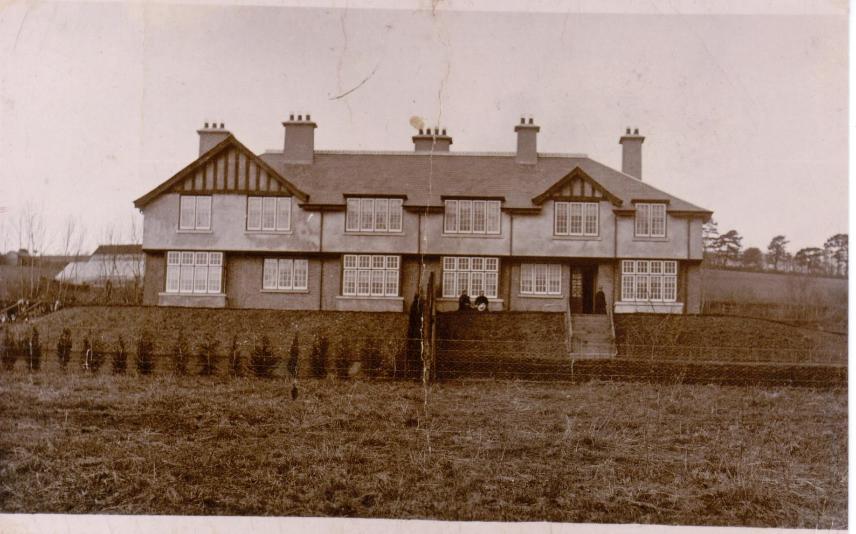
Above: Lyndhurst (left) and Ashe (right), 'villas' built by the Ashburton Building Company. This photograph circa 1911.
Photograph courtesy Jenny Wigram
In March 1890 the Portreeve, John Down, presided over a committee meeting of the Ashburton Improvement Society, which adopted a scheme for a building company in the town. Many of the 500 shares of £5 each were taken up at the meeting.
Western Times 28 March 1890 p7 col3
On Monday, 14th July 1890 in the Market Hall, shareholders in the new venture, called The Ashburton Building Company, held their first meeting. (Western Times 16 Jul 1890 p 2 col 3) The Chairman of the directors was Mr F Amery – almost certainly Peter Fabyan Sparke Amery - his brother John Sparke Amery was also present. These brothers were landowners, and P F S Amery was a JP for the county. It seems likely that they were the prime movers behind the new enterprise, as the first resolution was to accept the plans of Mr Rowell of Newton Abbot to build near Rew on the Druid Estate – which the Amery family owned.
Other shareholders included the Portreeve Mr John Down, Dr Ackerley, E Windeatt, E Tucker, H Stevens, S Yolland, G C Foot, J Bickford, and C J Jeffery. Mr R C Tucker was elected as auditor, and the Secretary was Mr S Tozer.
As well as the members of the Ashburton Institute and the Ashburton Mutual Improvement Society, all the Ashburton men would have known each other merely by living in the same town – and there were additional professional links, with three solicitors involved, and two bank managers.
They would have met through various organizations and activities. Some served as overseers together, or were on other committees to do with the running of the town, e.g. the sanitary committee, or the district highway board. Later many served on the newly formed Urban District Council, and Dr Ackerley, P F S Amery and G C Foot were all members of the school board. (Western Times 3 July 1890 p4 col 6 )
There were political affiliations - Maj R Tucker and F Amery were members of the Liberal Association, as was a shareholder mentioned in later reports, E Sawdye (Western Times 24 Jun 1890 p3 col 3)
And many met at convivial occasions: the annual banquet of the Loyal Ashburton Lodge of Oddfellows no 3881 Exeter District, held at Golden Lion in 1890, shows many familiar surnames, either from the initial meeting of the Ashburton Building Company, or from subsequent years. They include P G Bro J Down, Hon Mem Lieut-Colonel Amery, W Distin, G Langler, A Haye(s?), J Bickford, J Baker, E. J Sawdye, W H Abbot(t), and J H Foaden (Western Times, 14 Jan 1890 p7 col 4)
*******
Shareholders' names in alphabetical order. From various periods of time - some with different initials may refer to the same person. Those at the initial meeting are marked
W H Abbot(t): William Henry Abbott
Dr Ackerley: Richard Ackerley, General medical practitioner, Alexandra House, East St 1891 census at initial meeting
Lieut-Colonel Amery
F Amery, probably P F S Amery, at initial meeting
J S Amery: John Sparke Amery, born 1845/46 Ashburton. Land owner (1881 and 1891 census), at initial meeting
P F S Amery: Peter Fabyan Sparke Amery, born 1839/40 Ashburton, J.P. (1881 and 1891 census)
T Amery
F S Baker
J F Baker, probably Joseph F Baker, Commercial clerk – employee, 1891 census.
J Barnes
Berry
J Bickford, probably John Bickford, Bank manager (1891 census) at initial meeting
J W F Bickford
Rev W M Birch, Wickham Birch. Born 1830/31 Brusted, Sussex, Vicar of Ashburton (1881 census)
(born Bristead 1891 census)
J F Blake (should be Baker ?)
V G Cock
Hon R Dawson
W Distin, possibly William Thomas Distin, ironmonger, North St. (Kelly's 1902)
J Down
John Down, probably John Down Grocery and provision dealer, West St (1891 census) at initial meeting
Foaden, probably John Foaden, Builder and contractor, employer, West St (1891 census)
G C Foot at initial meeting
W Ford, possibly William Ford, Solicitor's clerk, East St (1891 census)
A Hays, probably Adrain Hays, Jeweller, North St (1891 census)
A Haye(s?)
T Hill, possibly Thomas Hill, Tailor and outfitter, North St. (1891 census – also has son, Tom)
W H Huddy, William H Huddy, Grocer, Foales Court (1891 census)
C J Jeffery, Charles J Jeffery, Bank manager Devon and Cornwall Bank, East St (1891 census) at initial meeting
G Langler, probably George Langler, Born 1833/34 Ipplepen, Saddler (1881 census) (North St 1891 census)
W H Langler s/o George Langler, Born 1871/72 Ipplepen (1881 census), Saddle and harness maker (1891 census)
F Lear
Mitchelmore, possibly James H Mitchelmore, Foreman tailor and cutter, West St (1891 census)
W H Mortimer
E Sawdye, probably Edward Sawdye, Surveyor and Land Agent, West St (1891 census)
E J Sawdye, Edward J Sawdye, Auctioneer and hotel keeper, Golden Lion East St (1891 census)
H Stevens, probably Henry Stevens, Railway Contractor, employer, Hazeldene, Chuley Road (1891 census) at initial meeting
S Tozer, probably Solomon Tozer, solicitor, on 1881 census aged 24. Died 1896 aged 40 – (memorial). At initial meeting
Col Tucker
E Tucker
Edwin Tucker Born 1838/39 Harbton (sic) Devon, Seed merchant (1881 census) at initial meeting
Funeral of Mr Edwin Tucker of Thorne Park. Sons: J Parnell Tucker, Edwin Tucker, (born 1869/70 1881 census), A H Tucker, E Tucker. Brother – A Tucker 'Flag at Constitutional Club hoisted at half mast'
Western Times 8 Sept 1916 p2 col 2
J Parnell Tucker (John Parnell Tucker, Maltster and seed merchant East St, Coley House 1891 census)
Mr P Tucker
Maj R Tucker
Mr R C Tucker at initial meeting
Maj R C Tucker, Robert Coard Tucker J P . Died at residence The Hall 93rd year. Solicitor; on UDC from formation in 1898 until 1910
Western Morning News 12 Oct 1925 p3 col 2
Son of Mr Robert Tucker, died 2 May 1893 aged 90 (Had been President of Liberal Association ) Brother to W Tucker
Western Times 9 May 1893 p3 col 2
Mr R E Tucker, Robert E Tucker (?) Born 1832/33 (s/o Robert Tucker) Ashburton, Solicitor and Auditor (1881 census)
Col R E Tucker
F White, possibly Frederick White, Glass and china dealer, North St, (1891 census)
E Windeatt, Edward Windeatt, a solicitor from Berry Pomeroy (see 1891 census) at initial meeting
S Yoll (sic)
S Yolland, possibly Stephen Yolland, Butcher, living in East St. (1891 census) or Stephen W Yolland, Coal merchant, living in East St (1891 census) at initial meeting
*******
Two months after their first meeting 'The directors of the Ashburton Building Company...decided to commence operations with two villas on the Druid Estate'
(Western Times 8 Sep 1890 p2 col 4), and a month after that the tender of Mr J Pomeroy*, builder, was accepted for building two villas near Rew Down Cross. Mr Pomeroy's tender was the cheapest of the three, proposing to build villa no 1 for £507 8s 6d and villa no 2 for £510 10s.
(Western Times 9 October 1890 p2 col 3)
*I think this should be Pomroy
In November 1890 Peter Fabyan Sparke Amery agreed to lease land to Edward Windeatt of Totnes 'In consideration of the erection and completion to the satisfaction of the said P F S Amery of the messuages and premises hereinafter mentioned..'
The land was 'bounded on the north by public road called Stone Carriers' Lane on the south by remainder of field number 356 on the east by right of way leading to remainder of field and the west by lands of P F S Amery called Longmeadow....'
4 houses were to be built, with at least £500 spent on each. None of them was to be used as an inn or a public house. A later indenture refers to an indenture dated 6th February 1891, made between Edward Windeatt of the first part and 'The Company' of the other part. This 'company' was the Ashburton Building Company.
Indenture 11th November 1890 and indenture 23rd December 1907 amongst the deeds of Cartlands. Many thanks to the owner for allowing me to see these.
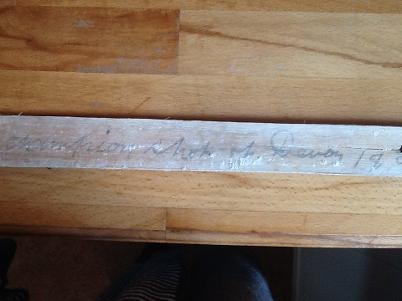
Work was soon obviously well under way. The photograph above shows a lath from near the eaves of Moorlawn, which has the inscription 'J Birch, Plasterer, champion shot of Devon 1891'
Who was J Birch, and what was he champion of ?
Joseph S Birch, a 33 year old plasterer, was living in North Street with his wife and family in 1891 (http://www.freecen.org.uk)
His eldest son, John T Birch, was probably the boy aged 10, son of Joseph Burch, who was involved in an accident the previous year. He had fallen from scaffolding at the Conservative Club, and was taken to his home in North Street: he was unconscious for several hours.
Western Times 7 October 1890 p8 col4
It seems highly probable that Joseph was a member of one of Devon's volunteer army corps. These had begun in 1859, as a result of 'Her Majesty's Government having had under consideration the propriety of permitting the formation of volunteer rifle corps...'.
http://www.researchpress.co.uk/volunteers
These companies often had shooting contests, and local newspaper reports towards the end of the century often mention the names Birch and Burch - sometimes coupled with the initial 'J', and sometimes as Pte Birch or Burch. Assuming they are all one person, he usually does quite well but is not the winner. However.....
In 1891 the Devon County Volunteers Association held an annual shooting contest. The Class F Association Challenge Cup was won by Pte J Burch, Ashburton, who received a 'Plate and £7'. It seems highly probable that this is the plasterer working on Moorlawn. Although he was perhaps stretching the truth a bit to claim to be Champion of Devon, he was certainly one of the winners.
The Exeter Flying Post 6 June 1891 p3
The only other activity I have found him involved in was in 1902 when Joseph Birch, plasterer, was fined 8s for using obscene language in his house (Western Times 26 March 1902 p2 col 4)
*******
Right: An original drain cover from Claremont (now Cartlands) supplied by W Pengilley, Builder, Ashburton.
Thanks to Roger Tilley for permission to photograph this item.
A William Pengilly is shown on the 1891 census, living with his wife and family at West Street, 'Greengrocer'. His occupation is shown as Market Gardener.
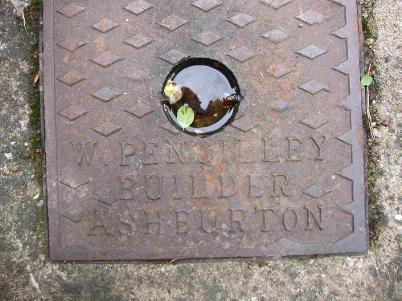
Kelly's Directory for 1902 has William Pengilly, Builder and greengrocer, West Street.
Kelly's Directory for Devon and Cornwall, 1902, Part 1, p33
By 1911 William Pengilley, still with wife Rebecca, has moved to St Lawrence Lane, and is now a mason
http://ancestry.co.uk
*******
By 1893 one of the first two villas was let (Western Times 3 Aug 1893 p2 col 3): this seems to have been the original intention for all the houses built by the company – they were 'Build-to-let', rather than being sold off when completed.
At the
annual general meeting, a few months later, shareholders had probably
lost some of their initial enthusiasm – some apparently did not
even come to the meeting, as the Exeter and Plymouth Gazette reported
that there was 'A fair attendance'. The Chairman of Directors F
Amery explained that owing to a 'general depression in the letting
of villas', there was still one without a tenant. He added that
“Great inconvenience had been caused by the Sanitary Authority's
'imperfect manner' in laying water to the property.
Receipts were £742. 17s payments £86. 12s: the balance due to bank on 1 Jan 1894 was £656. 4s 7d.
Exeter & Plym Gazette 7 Feb 1894 p4 col 3
*J S Amery was on the Parochial Sanitary Committee in May 1893 - also Dr Ackerley and S Yolland.
Western Times 23 May 1893 p2 col 5
*******
By 1901, if not before, the company was paying a dividend - at the annual general meeting the receipts were £76, and disbursements £51 - of which £24 was in dividend.
Western Times 6 Mar 1901 p 2 col 5
In 1902
another dividend was declared, and the tone of the meeting sounded
more optimistic than in the early years – the reports and accounts
were 'of a favourable character'. Receipts were £56, expenditure £54, and a dividend of 1s 6d per share was declared. The balance carried forward was £27.
By 1904 the dividend had risen to 2s 6d
Western Times, 27 Feb 1902 p 7 col 3
Western Times 16 Feb 1904 p 11 col 3
An ordinance survey map of 1905, Devonshire sheet CV111.15, shows Moorlawn and Claremont at Rew Down Cross.
In 1905 the Secretary stated that 'the houses were much in demand', and 'the machinery of the Company should be utilised for further building operations'. After discussion it was resolved that the directors devise means to raise capital and build more houses.
Western Times 10 Mar 1905 p13 col 1.
They seem to have been successful, as in 1906 Mr R Montague Luke, civil engineer and architect of Princess Square, Plymouth, won a contract for designing new villas and laying out the Druid Estate. At the annual general meeting two weeks later 'the plans for the new villas were greatly approved of', and it was hoped that work would soon begin. A dividend of 2s 6d per share was declared.
Western Times 16 Feb 1906 p 12 col 2
Western Times 27 Feb 1906 p 3 col 4
By the following year, 1907, the company was in the red by £2 2s 8d. This may have been because of expenditure on two new semi-detached villas that were in the process of construction.
There was probably some relief that the Sanitary and water committee recommended that the villas Ash and Lyndhurst be granted certificates of occupation.
Western Times 1 Mar 1907 p 10 col 1
Western Times 10 Jun 1907 p 3 col 3
By the end of the year 'the company have since the date of the last recited indenture sold and assigned one of the dwelling houses therein mentioned to Eliza Hernon(?) Manlove and Bertha Manlove...'
Indenture 23rd December 1907 amongst the deeds of Cartlands. Many thanks to the owner for allowing me to see these.
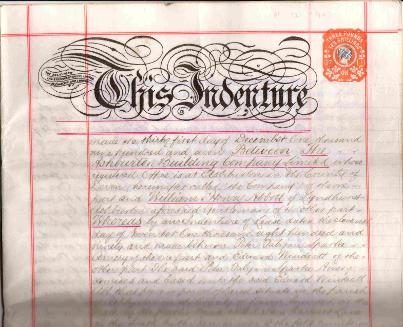
Left: The deeds to Lyndhurst. Dated 31 December 1907, William Henry Abbott originally leased the property from the Ashburton Building Company. On March 3rd of the following year Mr Abbott bought the freehold from John Sparke Amery for a consideration of £60.
The lane leading to the Rew Down Cross properties was at that time called Stone Carriers' Lane - later changed to Druid's Lane.
From my own collection
Right: F J Badcock, builder, Ashburton, provided the drain covers for Lyndhurst.
From my own collection
In 1911 Frank J Badcock, with wife and a six year old Frank J Badcock, was a building labourer.
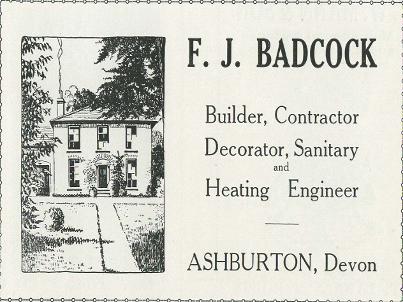
His father, George James Badcock, (died 1898), had been a stone mason.
http://ancestry.co.uk
http://www.freecen.org.uk
http://www.freebmd.org.uk
Owners of Lyndhurst:
1908 W H Abbott
1921 William Henry Abbott, a farmer aged 52, was at Lyndhurst for the census. Also in the house was his wife Alice Nosworthy Abbott, and their 26 year old son, Francis William Smerdon Abbott.
1921 census RG15, piece no. 10435, schedule 68
William Henry Abbot died in March 1925. Lyndhurst was left to his wife during her widowhood, and then to his daughter, Alice Margaret Perryman.
Brixham Western Guardian 30 July 1925, p2 col6
1925 Mrs A M Perryman
1949 Mr and Mrs E Ward
Ernest Ward of Lyndhurst, Ashburton, died at the Cottage Hospital on the 24th June 1954. Probate was granted to Edith Laura Ward. Effects £1656 5s 9d.
England and Wales Government Probate Death Index, 1858 -2019
1956 Mr T R Killick
1959 Mr and Mrs A J Braund
1961 Mr and Mrs H Lowell
See also Hugh Abbott's memories of living at Lyndhurst in the 1940s, in the Growing up in Ashburton section.
*******
Owners and occupiers of Claremont/The Priory/Cartlands
1908. Mary Heslop Wake, aged 82, died at Claremont in March 1908. Widow of the late Ralph Wake, she was to be interred at Bishopwearmouth Cemetery, Sunderland.
Shields Daily News, 9th March 1908, p3 col7
Probate was granted to James Phillips, retired commerial traveller, and Ralph Wake Phillips, grocer. Effects came to £1288 17s 5d.
England and Wales Government Probate Death Index, 1858 - 2019
1908 James Phillips
In the 1911 census James was 54 years old, a retired commercial traveller in wine and spirits; his wife, Mary Jane, was 53.
1911 census RG14, piece no. 12726, schedule 153
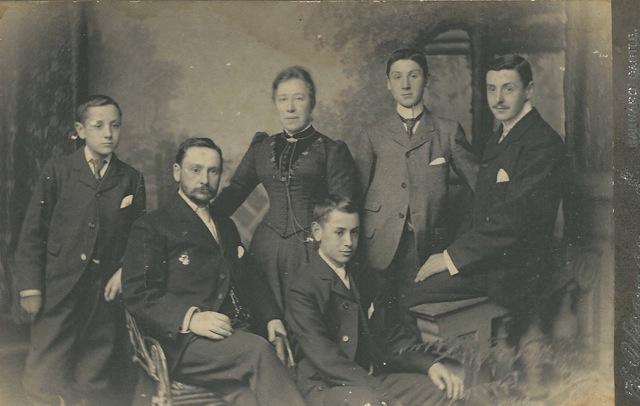
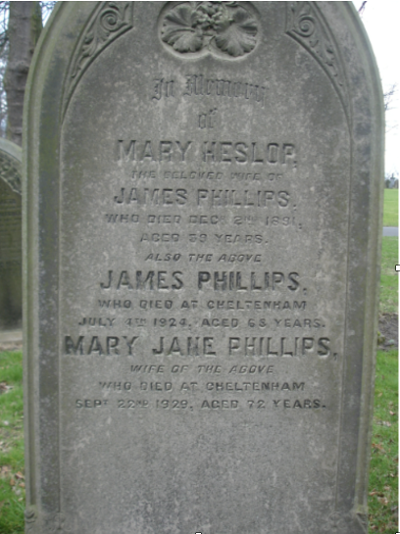
In 1912 Messrs Spooner and Co. , auctioneers of Plymouth, sold the freehold detached villa, Claremont, Ashburton, for £690 by private treaty.
Western Daily Mercury, 18th June 1912, p7 col7
1912 Helen Cecilia Goulding (of the convent of Notre Dame, Clapham Common, London) and Dorothy Henry (of the convent of Notre Dame, Wyndham St., Plymouth) and Mary Josephine Dobson (of the same place)
1920 Philip Roberts
Philip Roberts was at the Priory in 1921. Aged 50, he was a retired engineer's clerk, who had been born in Cheshire. His wife, Mary Josephine Roberts, was in the house with him at the time of the census.
1921 census, registration district 272, enumeration district 2
1932 Mrs M J Roberts*
1933 Mrs H G Roberts**
1939 Helen G Roberts was at Cartlands at the time of the 1939 register. She was a (travelling) territorial nurse.
An auction of Cartlands for March 1957 was cancelled, after it was sold by private treaty. The sale of antique and other furniture on the premises was still going ahead.
Torquay Times and South Devon Advertiser, 22 February 1957, p6.
1957 George Hooper Fogaty
George Hooper Fogaty, of Cartlands, Druid, Ashburton, died on 21st September 1967. Probate was granted at Winchester; assets amounted to £8210.
England and Wales Government Probate Death Index 1858 -2019
1968 Ethel Fogaty
*By this time the property is called The Priory
** The Priory becomes Cartlands
Information from the deeds of Cartlands. Many thanks to the owner for allowing me to see these.
*******
With Mr Abbott on the brink of leasing one of the 'villas', the company turned its attention to a field in Dolbeare Road. They applied to the Sanitary and water committee asking what the conditions were for water and gas to be supplied there, where they proposed to erect two villas. The Surveyor estimated the cost to be £130, and it was suggested that the company should pay £75 towards it. The committee also recommended that an offer of £106 be made towards claims of £146 in compensation for the laying of low level sewers through various properties. Mr Sawdye wanted to know how the figures had been arrived at, and it was agreed to go to committee on the matter.
Exeter and Plymouth Gazette 9 Dec 1907 p 4 col 6
It seems that these villas were never built, but the
following April the Sanitary committee recommended that plans be
passed for two residences for the Ashburton Building Company at Lurgecombe Cross.
Western
Times 7 April 1908 p 2 col 4
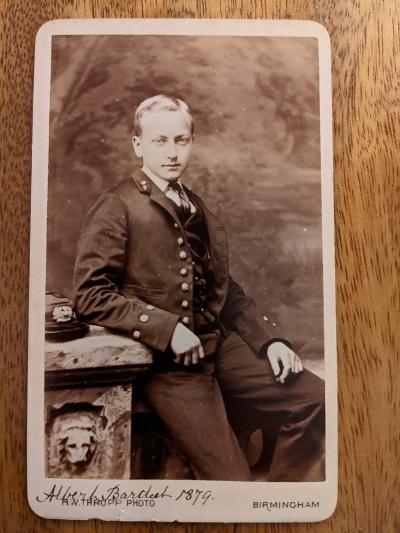
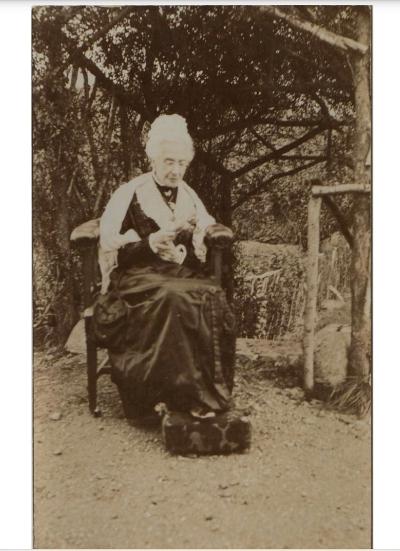
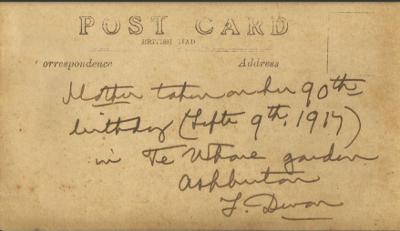
*******
1911. More occupants of properties built by the Ashburton Building Company:
Moorlawn: Eliza H Manlove and her sister Bertha Manlove
Claremont: James Phillips and his wife Mary Jane Phillips
Ashe: Alice Elizabeth Merton and her daughters Mary Lillian Merton and Alice Irene Merton
Lyndhurst: William Henry Abbott and his wife Alice Nosworthy Abbott, together with their children Alice Margaret Abbott and Francis William Smerdon Abbott
1911 Census http://ancestry.co.uk
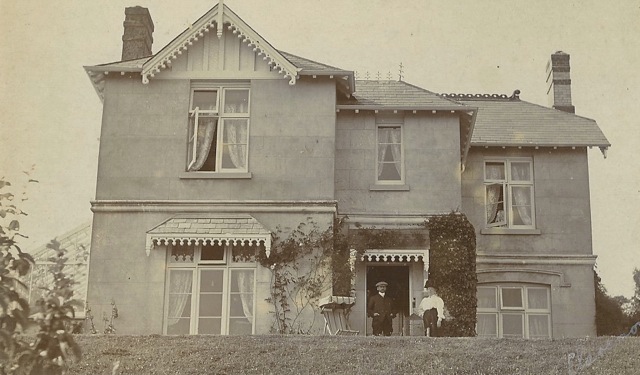
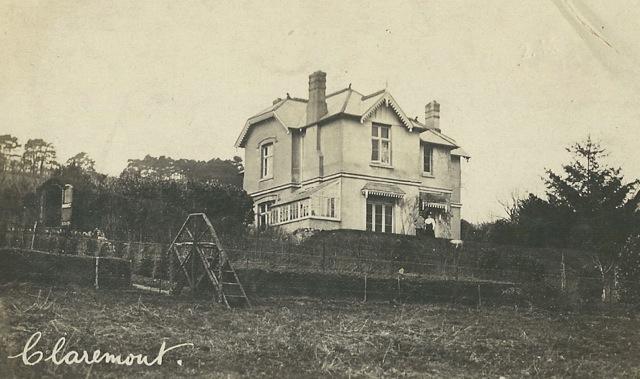
On April 19th 1922 Lieut.-Col Sir Alfred Pearce Gould KCVO died at Ashe. An eminent surgeon and the author of several books on surgery, he spent most of his time in London - however he was a Justice of the Peace for Devon, and for many years had been the president of the Ashburton and Buckfastleigh Cottage Hospital.
Western Morning News 20 April 1922 p4 col6
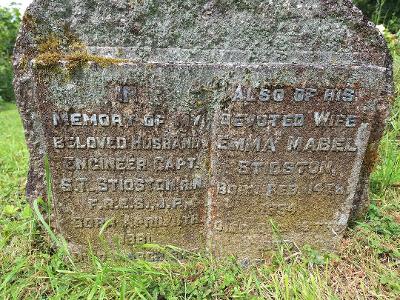
Western Times 15 January 1932 p6 col4
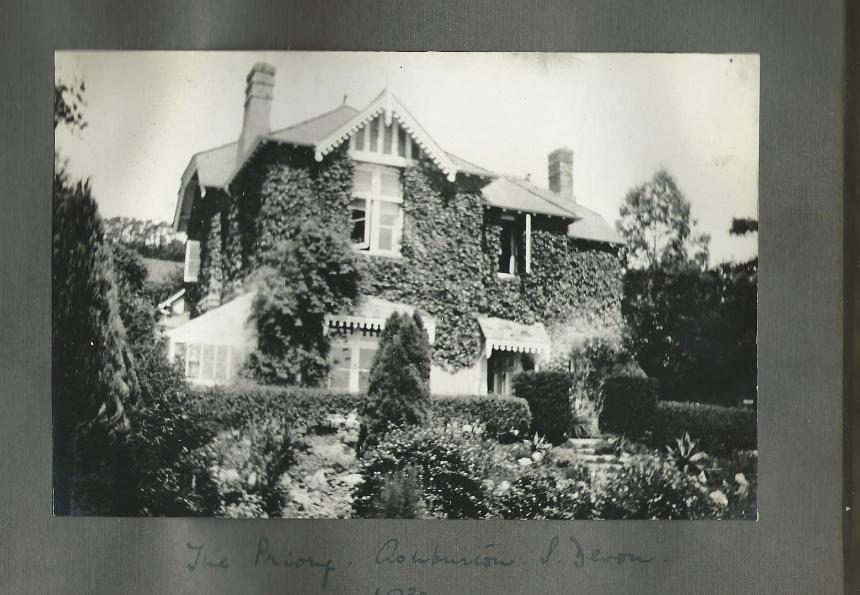
In 1913, as the world edged closer to war, the annual general meeting stated that the company's property had been maintained well, and improvements to the entrances of the villas had been carried out at cost to the lessees. The position of the company was, said the Chairman, 'favourable', and a dividend of 2s per share was declared.
Western Times 7 Mar 1913 p14 col 1
Western Times 6 Apr 1923 p 10 cols 1 and 2
*******
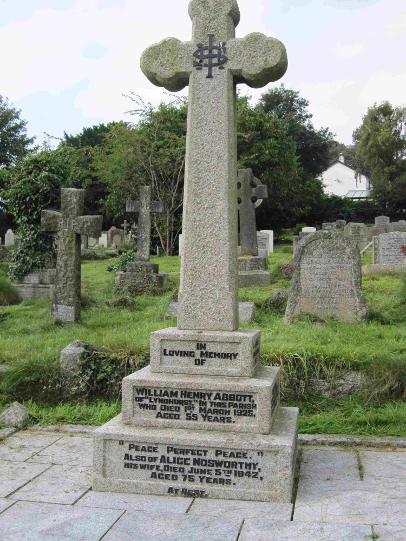
Above: Memorial to William Henry Abbott, 'of Lyndhurst' who died in March 1925 aged 55.
My own photograph 2014
Believe it or not
This is how the story goes. As you might expect, the materials for the houses were conveyed to the building sites by horse and cart, and in particular a cart pulled by two horses who may, or may not, have been called Prancer and Dancer. The horses would plod up the hill, the cart would be unloaded, they would then plod down to the town again, and the whole process would be repeated.
One day the driver, or drivers of the cart stopped for refreshment at a local inn - which may, or may not have been The Victoria. The horses grew tired of waiting......
......and so took the materials on their own to where they were supposed to be.
This story may not be as far-fetched as it appears. People were frequently hauled before the magistrates for leaving horses and waggons unattended:
In 1880 Joseph Easterbrook was fined 18s for leaving his horse and cart outside the Red Lion Inn.
Western Times 21 September 1880 p8 col5
In 1903 Frank Coleman, employed by coal merchant T W Mann, was fined 8s for leaving a horse and waggon without proper control.
Western Times 25 March 1903 p4 col2
*******